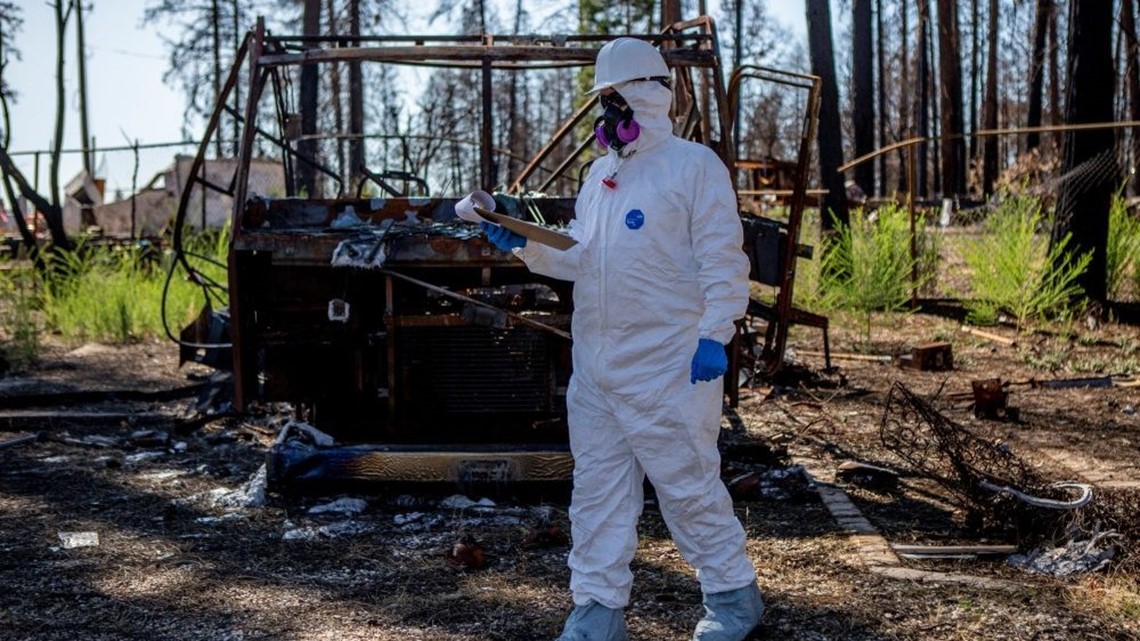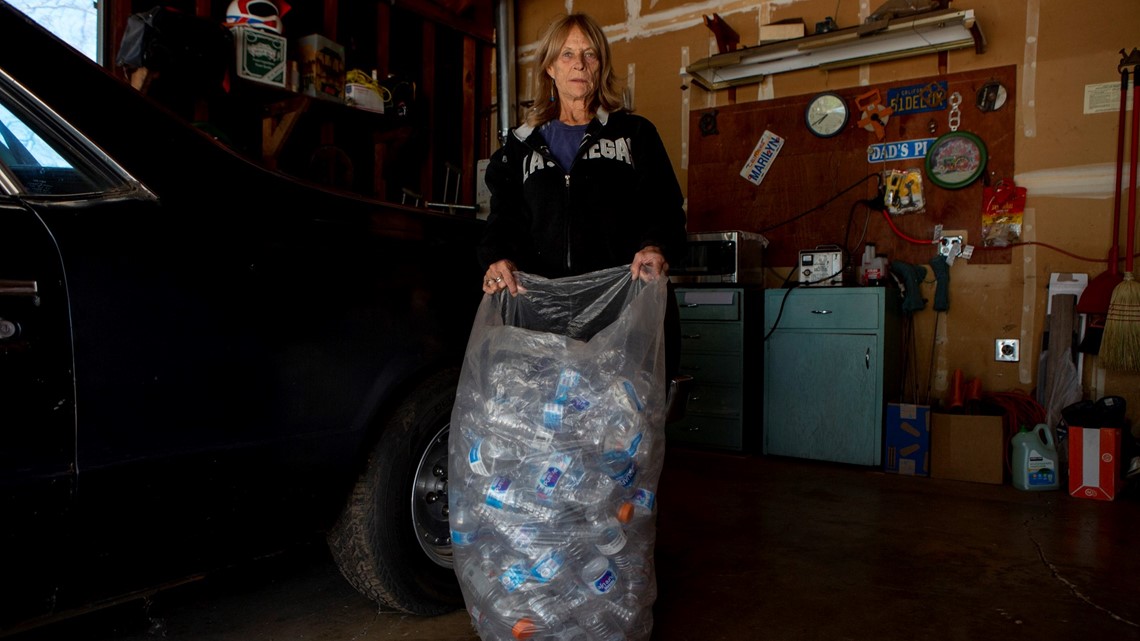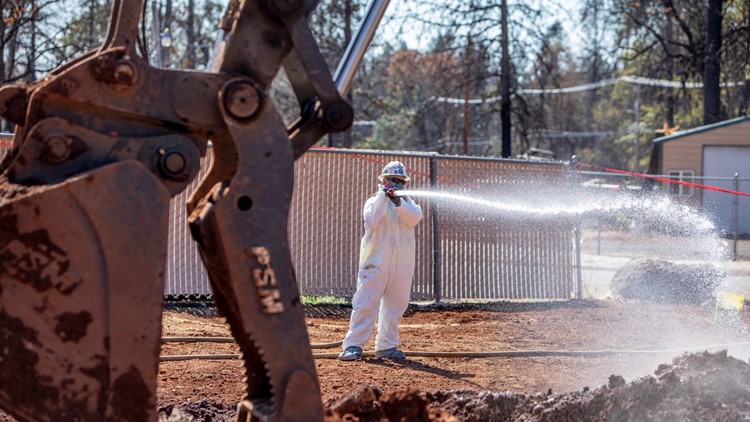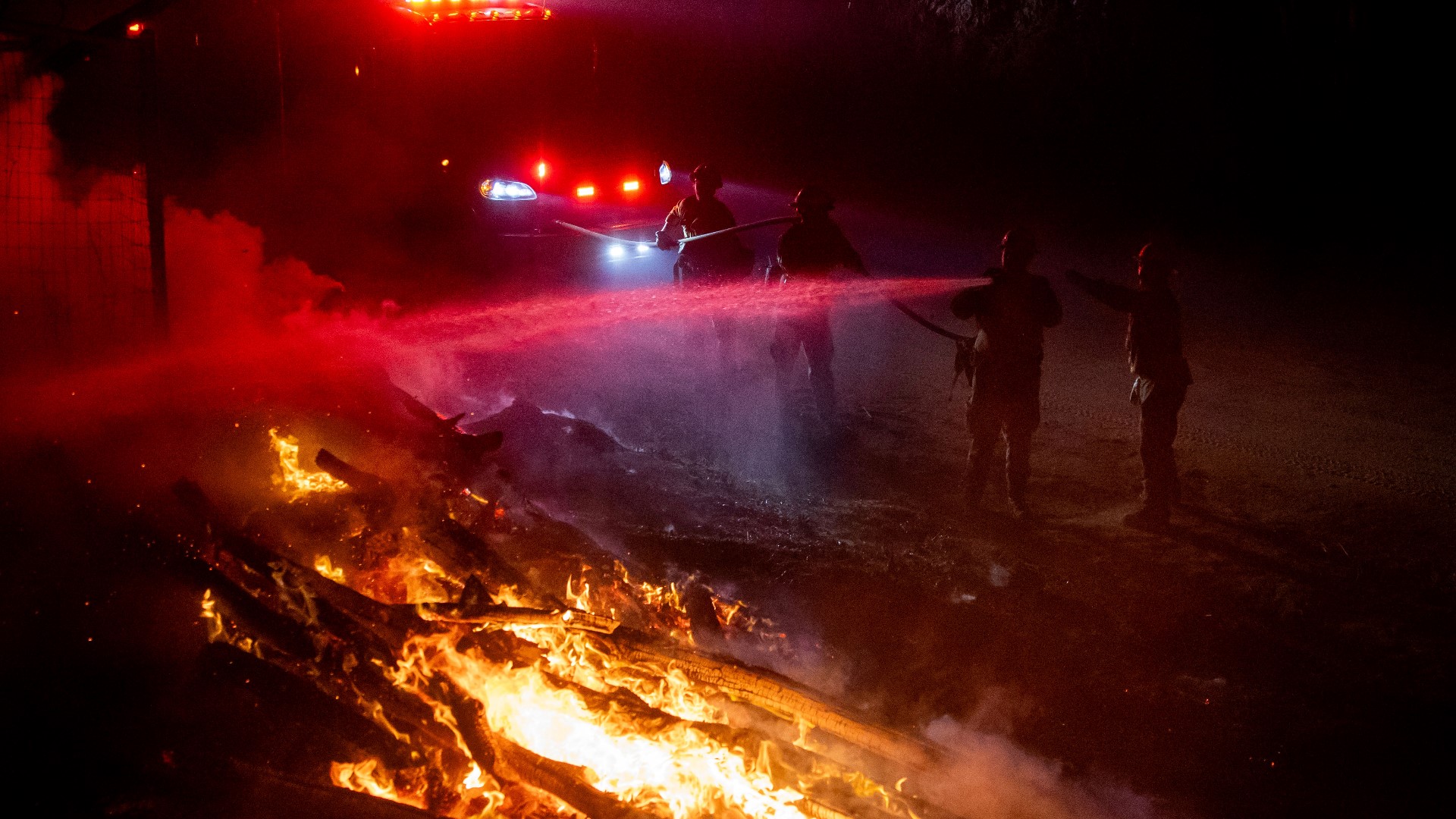PARADISE, Calif. — Next month, the Northern California community of Paradise and will commemorate a somber anniversary: On Nov. 8, 2018, the town burned to the ground. Nearly 11,000 properties were erased in the deadliest, most destructive wildfire in state history, which took 85 lives.
Now, as California braces for peak fire season, the most extensive post-fire cleanup it has ever taken on is nearly complete. Crews have hauled off more than 3.6 million tons of debris — twice what was removed from the World Trade Center site after the attacks on Sept. 11, 2001, in New York City.
But the danger was not extinguished when the last flame was doused. After the Camp Fire burned through the town along a wooded ridge, it left behind a blight on the environment: a tainted water supply, unhealthful air and soil that contains heavy metals or toxic chemicals. The city still advises residents not to drink tap water.
The painstaking and expensive cleanup process — more than $1 billion in public money spent so far from an allocated $1.75 billion — has been necessary not just to allow residents to rebuild and schools and businesses to reopen, but also to make Paradise environmentally safe. Potential dangers still lurk for those among the 27,000 former residents who are resuming their lives in town and, more acutely, for the hundreds of workers who have been sifting through the fire remnants, sorting and removing charred hulks of cars, mobile homes, melted metal and tons of dirt.
The state Division of Occupational Safety and Health enforces requirements for workers to wear safety gear, lending an otherworldly aspect to Paradise: The already-barren landscape is teeming with people in white protective suits and booties, wearing hard hats and breathing through respirators.
If it seems like overkill, it’s not.
“Think about all the things in a house,” said David Hornung, who oversaw Occupational Safety and Health’s response to the Tubbs Fire that ravaged the Sonoma County town of Santa Rosa in October 2017. “There are televisions, electronics, dishwashers; it’s really complex.” Computers and other electronics contain lead, mercury, arsenic and other dangerous chemicals.
“Then you have plastics and composite material,” which may release hydrochloric acid, sulfur dioxide and heavy metals when burned. “You get a real complex mixture of chemicals.”
Debris cleanup is free to residents who register with local authorities, on a first-come-first-served basis. Generally, however, work on schools and public buildings has taken priority. The state hires specialized companies to do the work.
The Camp Fire was caused by utility equipment owned by Pacific Gas and Electric, which has agreed to pay billions in damage claims and is preparing widespread power shutoffs in hopes of preventing more blazes. Some Paradise residents have chosen to pay for cleanup work themselves or use their homeowners’ insurance, potentially affording them a faster turnaround. Temporary fencing around town is plastered with phone numbers of cleanup companies advertising their availability.
CalRecycle officials say they are unaware of another state or country that operates a similarly extensive post-wildfire environmental cleanup. The program has evolved since 2007, in the wake of a huge firestorm across Southern California, into a sophisticated machine involving numerous state agencies, led by the Office of Emergency Services and CalRecycle, which have devised a step-by-step protocol.
Pauline Totten, who supervises fire debris removal projects for CalRecycle, has been on the Paradise job since January. Her hard hat is speckled with decals commemorating work on previous fires, but the scope of this cleanup is unprecedented, she said.
“Normally we have one contractor. On this we have three,” she said. As many as 3,000 workers took part in the project, officials said.
After nine months, the work is winding down, with 99% of the sites in Paradise cleared. On a recent day, crews were tackling the last of the major debris areas. Totten watched as machines scraped layers of soil and plopped their loads into lines of dump trucks idling along the town’s main drag. A worker trained a powerful hose on the piles of dirt to keep the dust down.
Work is performed parcel by parcel, in prescribed phases. First, the state Department of Toxic Substances Control removes such hazardous waste as propane tanks and asbestos, commonly found in older buildings. Other state agencies collect air samples.
Although much of the town literally disappeared in a column of smoke, some material ended up in the soil. Before wholesale dirt removal took place, a contractor collected soil samples at different depths from 187 locations and analyzed them to establish what was likely to have been in the ground before the fire and to determine the extent of removal needed.


Under Totten’s supervision, crews are beginning their assessment of what was once a sprawling mobile-home park. Someone scrawled addresses on the asphalt in front of the gutted homes to help identify them.
The state requires extensive mapping of sites before cleanup can begin: “Measure and record foundation, structures, debris, utility infrastructure and property-specific hazards,” the guidelines say.
At the mobile-home park, a technician sketched several chimneys on his drawing of the site; the chimneys, a common post-fire hazard, will be knocked over by heavy equipment. An air monitor was strapped to the technician’s waist.
Totten said her crews convene on the ground only after state workers have swept the area: Inspectors left behind a white X on burned-out vehicles from which they removed batteries, which contain dangerous chemicals.
Next will come crews that sort metals to be trucked to recycling facilities. Other debris is taken to designated landfills. There has been so much waste that some facilities have waivers allowing them to accept more than their usual storage limits, officials said.
When the site is ready for the final step, it will be leveled and, if necessary, erosion control measures will be taken.
Totten said the work is demanding, but she never forgets that “debris” means something more precious to those who lived there.
“I look at this and see that this was someone’s home,” she said, gesturing around the mobile home park, strewn with mangled bicycles and rusted cars. “My grandmother could have lived here.”


Paradise residents have generally praised the cleanup effort, even as they continue to feel the environmental effects of the fire.
“I already (used) an inhaler, and I’ve been sick from all this,” said Marilyn Adams, whose house was spared but made unliveable by a pall of smoke on walls and furnishings. That residue, and the lingering smoke in town, has aggravated her respiratory problems, Adams said, and her four-year-old granddaughter, whose health is compromised by a pre-existing condition, has also experienced difficulty breathing.
Adams and her husband came back only six weeks ago, after they paid for drywall removal and new furnishings. “We’re the lucky ones, whose home was saved. But it’s difficult with all the other problems.”
In the hills above town, Sue Simms and her husband Carl are mostly following the city’s advice regarding the water supply: Don’t drink tap water; avoid taking baths; take quick, cool showers.
Some of the water supply is contaminated with benzene, which can be naturally occurring but is also a component of plastic and other man-made products. Short-term exposure can cause eye and skin irritation, and federal guidelines warn that prolonged exposure can cause cancer.
Officials hypothesize that benzene was released as plastic water pipes melted; its intrusion into water supplies was also found after the Tubbs Fire. While testing continues in Paradise, many residents are drinking only bottled water, which the city provides.
The Simmses gave bottled water to their pets and backyard chickens before installing a state-of-the-art charcoal water-filtration system and a similarly robust air-filtration system for their home’s heating and cooling system.
“The contaminants,” Sue Simms said, “are everywhere.”
CalMatters.org is a nonprofit, nonpartisan media venture explaining California policies and politics.
FREE ABC10 APP:
►Stay In the Know! Sign up now for ABC10's Daily Blend Newsletter





